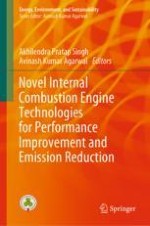This monograph covers different aspects of internal combustion engines including engine performance and emissions and presents various solutions to resolve these issues. The contents provide examples of utilization of methanol as a fuel for CI engines in different modes of transportation, such as railroad, personal vehicles or heavy duty road transportation. The volume provides information about the current methanol utilization and its potential, its effect on the engine in terms of efficiency, combustion, performance, pollutants formation and prediction. The contents are also based on review of technologies present, the status of different combustion and emission control technologies and their suitability for different types of IC engines. Few novel technologies for spark ignition (SI) engines have been also included in this book, which makes this book a complete solution for both kind of engines. This book will be useful for engine researchers, energy experts and students involved in fuels, IC engines, engine instrumentation and environmental research.
